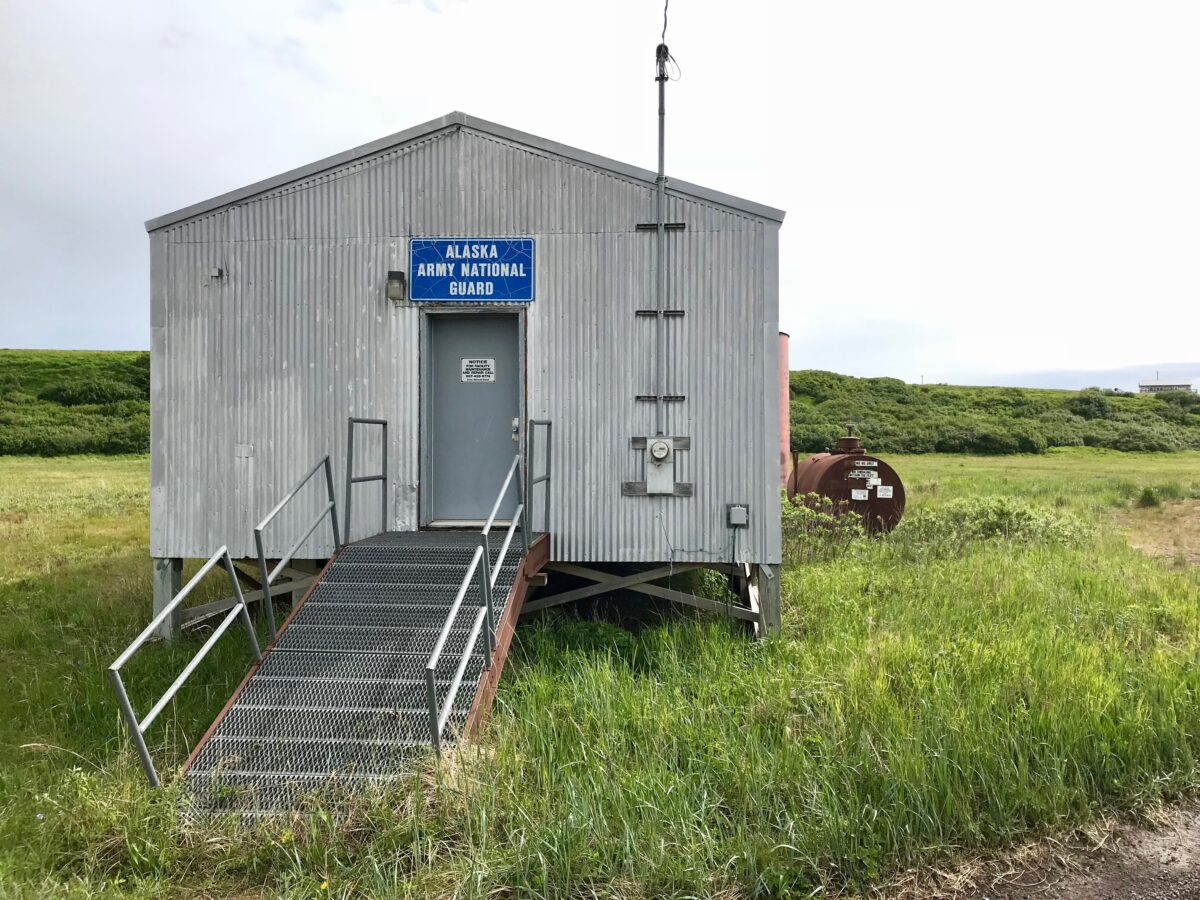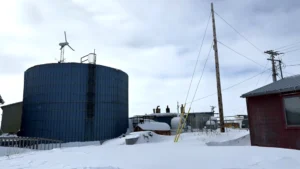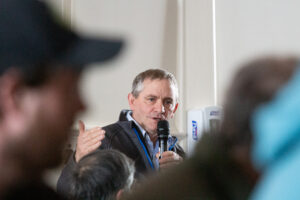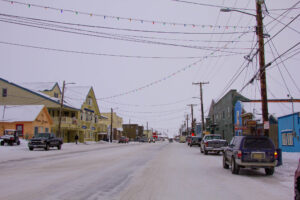Stebbins is having one of the Norton Sound region’s worst outbreaks of COVID-19 with at least 24 cases being reported since the outbreak started on October 6th. Community leaders and health experts say the outbreak is highlighting the need for running water. While running water would be ideal, KNOM reports on some temporary solutions the community of over 700 is using in the meantime.
At 73- years- young, Virginia Tom of Stebbins has seen a lot: including outbreaks of pneumonia, tuberculosis, and other public health issues. But the novel coronavirus outbreak in the village scares her.
“It seems to spread really fast. Just fast! One minute I see a person walking by the window and then the next minute I hear, ‘he’s got it’.”
– Virginia Tom
Tom has never been so health conscious in her life. With COVID-19 active in the community, both she and her daughter have been doing the errands and caring for their household of nine people. That includes both children and Elders.
When she is running errands, Tom wears a mask and is always washing her hands.
“I do more hand washing than ever. Oh my gosh!”
But Stebbins does not have running water or a sewer system. It’s un-serviced. Just like her neighbors, Virginia Tom hauls water from the local washateria for all household needs, including hand washing.
With water being in short supply, many people will stretch their water by filling a washing basin with soap and water every morning. It should be replaced after every use but in many cases, it ends up being used by the family throughout the day.
“And that’s a potential place for spreading contamination if it isn’t changed out regularly.”
– Sean Lee with NSHC
Sean Lee is the Sanitation, Engineering and Construction Project Manager for Norton Sound Health Corporation’s Office of Environmental Health. The department has been working to set up new hand-washing stations for homes in all of the region’s village communities, not just Stebbins.
“We worked on creating a basic hand washing station that utilizes two buckets, and it has a little copper faucet on it. And it uses a foot pump.”
The bottom bucket is filled with clean water and the foot pump pushes the water up to the top bucket.
“One of the users would just basically step on the foot pump. And then a good two to three seconds stream of water comes out every time they step on the foot pump.”
It’s more water efficient than just running water through a tap and Lee thinks in some ways it is more hygienic too.
“There’s no touching involved with the hands, so it helps prevent cross contamination. And it’s also a very portable unit that just needs fresh water in the bottom.”

Stebbins is the first regional community to receive those sinks. They’re currently being assembled and will eventually be distributed to every home in town.
It’s not a permanent solution by any means, but Lee does think the coronavirus pandemic has forced some innovative thinking and design for unserviced communities. Lee says running water would be the “gold standard”.
“It [the pandemic] has really highlighted the need for water in unserved communities because the outbreaks in Gambell and the outbreaks in Stebbins are mostly related to not having adequate water for handwashing.”
In the meantime, Virginia Tom is keeping things clean for the nine people living in her three-bedroom house.
“I wish we had running water but I like those handwipes! The disposable wipes that you pick up for cleaning, those are real good!”
– Virginia Tom
Those wipes are hard to come by anywhere in the country right now and they are also sold out in the community of Stebbins. So, NSHC is working with local water operators to get the community supplies and instructions to make their own bleaching solutions.
“The water treatment plant operator would be able to make a batch of household bleach chlorine solution from the chlorine that they have in their water treatment plant used for disinfecting purposes. And it would be the same 5% solution that you get from your household bleach, like Clorox.”
– Sean Lee with NSHC
Lee is hopeful that the temporary innovations borne out of necessity by COVID-19 can have some lasting benefits for regional communities. Even if either the sinks or bleach solutions get used long-term, he thinks they could help improve the state of sanitation in those villages.
But the lack of adequate sanitation is still frustrating for healthcare workers like physician’s assistant Mark Hayward who is working to do COVID-19 testing in Stebbins.
“The fact that these are American citizens living in 21st century America without running water, and having to crap in a bucket, is inappropriate. And that’s a word that I’m toning way down for radio.”
– Mark Hayward
But as KNOM has reported before, there are layers of bureaucratic and funding issues that mean plumbing for Stebbins is a long way off. Hayward says most residents are doing everything they can to combat the virus, but they don’t have all the resources they need.
Virginia Tom says she is just trying to keep clean and make the best she can of a hard situation.
“In a way we spend more time with our family in home. We are even closer to our family here.”
Image at top: The Alaska Army National Guard armory in Stebbins is now used as isolation housing for COVID-19 patients. (Photo: Gabe Colombo, KNOM)





